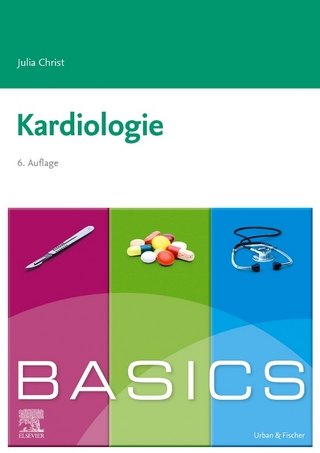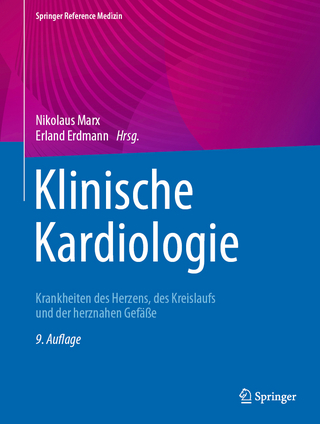
Hypoxic Respiratory Failure in the Newborn
CRC Press (Verlag)
978-1-032-07818-2 (ISBN)
We have all been hypoxic. Fetal tolerance for intrauterine hypoxia arises from evolutionarily conserved physiological mechanisms, the antecedents of which can be learned from diving mammals or species at high altitudes. Understanding fetal hypoxia leads to understanding the huge physiological shifts of neonatal transition and the dangers of perinatal hypoxia.
This comprehensive volume of topical review articles by expert authors addresses the origins of hypoxia tolerance, the impact of oxygen on circulatory transition at birth, and the biochemistry of hypoxia in the pulmonary circuit, as well as the classification, diagnosis, and clinical management of hypoxic respiratory failure and persistent pulmonary hypertension in the term neonate.
The goal of Hypoxic Respiratory Failure in the Newborn is to connect our understanding of hypoxia from animals in extreme environments, with how the human fetus handles its hypoxic environment; and why the human newborn suddenly cannot. The book will educate health care professionals on how to care for newborns with hypoxic respiratory failure, including the use of up-to-date diagnostic tools and therapies. It also highlights areas of controversy and ongoing research in hypoxic respiratory failure and pulmonary hypertension of the newborn, including challenging case studies.
Key Features
Explores evolutionary context and comparative physiology of hypoxia tolerance in the fetus and neonate, from basic research to clinical scenarios
Provides guidance to trainees, physicians, and allied health professionals engaged in NICU care; pediatricians, cardiologists, pulmonologists, anesthesiologists, neonatologists, and physiologists to effectively manage infants in hypoxic respiratory failure
Includes case scenarios emphasizing current diagnostic and therapeutic controversies and algorithmic approaches to decipher difficult clinical cases
Editor Dr Shyamala Dakshinamurti is a neonatologist and biomedical researcher, Professor of Pediatrics and Physiology at the University of Manitoba, Canada, and member of the Biology of Breathing theme, Children’s Hospital Research Institute of Manitoba. Section Editors Dr Steven H. Abman is Professor of Pediatrics and Director of the Pediatric Heart Lung Center at the University of Colorado Anschutz School of Medicine and the Children’s Hospital Colorado, USA. Dr Po-Yin Cheung is a neonatologist of the Northern Alberta Neonatal Program of Alberta Health Services and Professor in the Departments of Pediatrics, Pharmacology and Surgery at the University of Alberta, Canada. Dr Satyan Lakshminrusimha is a neonatologist and the Dennis and Nancy Marks Chair and Professor of Pediatrics at the University of California at Davis, Sacramento, USA. Dr Patrick McNamara is a staff neonatologist and Director of the Division of Neonatology at the University of Iowa Stead Family Children’s Hospital and Professor of Pediatrics and Internal Medicine, University of Iowa, USA. Dr William K. Milsom is a comparative physiologist and Emeritus Professor of Zoology at the University of British Columbia, Canada.
Table of Contents
1. Introduction
Part 1: The Origins of Hypoxia Tolerance
2. The Human Fetus and Metabolic Adaptations to Hypoxia
3. Hypoxia as a Neuroinflammatory Stimulus During Development
4. Human Adaptations to High Altitude
5. Fetal Llama Adaptation to Altitude in the Andean Altiplano
6. Neonates of Burrowing and Hibernating Mammals: Metabolic and Respiratory Adaptations to Hypoxia
7. Diving Response and Hypoxia in Deep Sea Mammals
8. The Phylogeny and Ontogeny of Cardiorespiratory Coupling in Vertebrates and its Relevance to Non-Invasive Monitoring of the Human Fetus
Part 2: Fetal Hypoxia and Neonatal Transition
9. Fetal and Neonatal Oxygen Environment
10. Fetal Oxygenation During Maternal Hypoxic Illness
11. Hemodynamics of the Circulatory Transition
12. Oxygen During Postnatal Stabilization
Part 3: Biology of Hypoxic Respiratory Failure in the Neonate
13. Hypoxia and Pulmonary Artery Structure
14. Animal Models of PPHN and Vasoconstrictor Signaling in Hypoxia
15. Hypoxia and Endothelial Dysfunction in the Lung
16. Effects of Hypoxia on Pulmonary Vascular Smooth Muscle Contraction and Relaxation
17. Cellular Oxygen Sensing, Mitochondrial Oxygen Sensing and Reactive Oxygen Species
18. Reactive Oxygen Species Signaling in Animal Models of Pulmonary Hypertension
19. Hypoxia, Myocardial Metabolic Adaptation and Right Ventricular Performance
20. Hypoxic Remodeling of Neonatal Pulmonary Artery and Myocardium
21. Hypoxia-Induced Epigenetic Mechanisms of Pulmonary Hypertension
Part 4: Hypoxia and Collateral Damage
22. The Effects of Hypoxia Ischemia on the Term Brain, and A Strategic Approach
23. Effects of Hypoxia on Cerebral Perfusion and the Blood-Brain Barrier
24. Effects of Hypoxia on Airway, Alveolar Function and Respiration
25. Hypoxic Respiratory Failure and the Neonatal Kidney
26. The Effect of Hypoxia on Intestinal Function
27. Effects of Hypoxia on Perinatal Drug Disposition
28. Anesthetic Considerations for the Neonate with Hypoxic Respiratory Failure
Part 5: Diagnosis and Management of Neonatal Hypoxic Respiratory Failure
29. Epidemiology and Outcomes of Infants with Hypoxemic Respiratory Failure
30. Clinical Evaluation of Hypoxic Respiratory Failure
31. Diagnosis of Pulmonary Hypertension by Echocardiography
32. Right Ventricular Performance and Ventricular Interdependence in Hypoxia
33. Ventilation Strategies in Neonatal Hypoxemic Respiratory Failure
34. Pulmonary Hypertension Phenotypes in the Newborn
35. Special Consideration: HRF in Congenital Diaphragmatic Hernia
36. Special Consideration: Hypoxemic Respiratory Failure Among Patients with Hypoxic Ischemic Encephalopathy
37. Special Consideration: HRF in the Preterm
38. Hypoxemic Respiratory Failure – Neonatal Cases
| Erscheinungsdatum | 04.11.2021 |
|---|---|
| Zusatzinfo | 3 Tables, color; 21 Tables, black and white; 13 Line drawings, color; 15 Line drawings, black and white; 35 Halftones, color; 10 Halftones, black and white; 48 Illustrations, color; 25 Illustrations, black and white |
| Verlagsort | London |
| Sprache | englisch |
| Maße | 210 x 280 mm |
| Gewicht | 494 g |
| Themenwelt | Medizin / Pharmazie ► Allgemeines / Lexika |
| Medizin / Pharmazie ► Gesundheitsfachberufe ► Hebamme / Entbindungspfleger | |
| Medizinische Fachgebiete ► Innere Medizin ► Kardiologie / Angiologie | |
| Medizinische Fachgebiete ► Innere Medizin ► Pneumologie | |
| Medizin / Pharmazie ► Medizinische Fachgebiete ► Pädiatrie | |
| ISBN-10 | 1-032-07818-9 / 1032078189 |
| ISBN-13 | 978-1-032-07818-2 / 9781032078182 |
| Zustand | Neuware |
| Haben Sie eine Frage zum Produkt? |
aus dem Bereich


